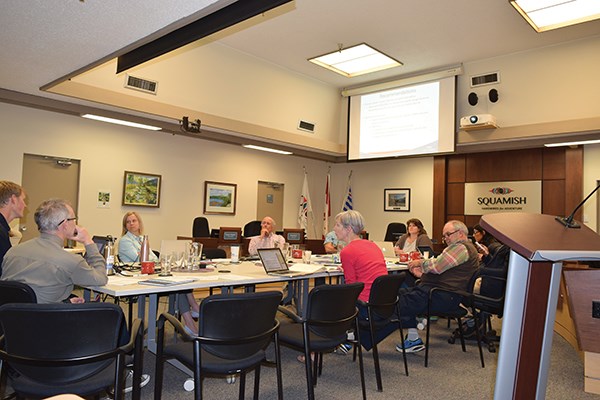A large debris flow barrier is the best option for the Cheekye Fan, according to a new report.
The report, commissioned by the District of Squamish, concurs with a previous consultant’s report that a large debris flow barrier placed in the Upper Canyon above the Cheekye Fan is likely the overall best option to protect lives, land and development from landslide risk on the Fan.
The $50,000 Kerr Wood Leidal report submitted to council at Tuesday’s committee of the whole meeting was in sync with a previous report by BCG Engineering and Consulting, commissioned by BMS Cheekeye One Projects and presented to council last month.
Council voted unanimously Tuesday to direct staff to work with BMS Cheekeye One projects and its consultants to determine terms of reference for the process to design and review the Upper Canyon debris flow structure.
“The primary objective of the mitigation is to move risk from the current unacceptable state... getting to the annual risk of fatality to less than one in 10,000 for existing development and annual risk of a fatality to less than one in 100,000 for any new development,” said district engineer David Roulston, who presented the report Tuesday. “There’s no question the Upper Canyon barrier provides the best protection and the best overall risk reduction.”
For the district report, the consultants looked at mitigation options for the Cheekye Fan based on social, economic and environmental factors, Roulston said.
“The report recommends that this [Upper Canyon] mitigation strategy be the one that is pursued and designed to determine clearly that it is feasible and can reduce risk as anticipated,” states the report.
The barrier may be combined with other mitigation options, such as debris flow basin, Roulston explained.
The advantage of the large debris barrier option, according to the report, is that it provides downstream protection, doesn’t transfer risk to other areas and may allow for further development on the Fan, and the developer will take on the cost of building the structure.
BMS Cheekeye One Projects (also called Cornerstone Developments) is a partnership between the Squamish Nation and the developers Bethel and Matthews Southwest, which have proposed an approximately 750-unit housing project for on the Fan in Brackendale and has offered to pay for construction of the debris flow barrier, if the housing project goes ahead. The district may then be responsible for maintenance and operation of the barrier, but the developer has suggested the proposed new development could fund the capital and operating costs.
Mayor Patricia Heintzman said she is also in talks with other levels of government regarding funding.
In February, council passed first reading of the zoning amendment bylaw and second reading of the official community plan (OCP) amendment that help pave the way for the housing project slated for Brackendale. Mitigation to reduce risk to life and property already on the Fan is necessary regardless of whether or not the development goes ahead.
The report warns that there is still much to consider in terms of the barrier, and challenges remain. “The district should keep in mind that a very large debris barrier on the Cheekeye Fan would be significant on a world scale,” the report states. “Long-term operation and maintenance activities may need to address some unexpected issues. Liability concerns should be carefully evaluated for the possible outcome that the works do not perform as intended during a large debris flow.”
The large debris flow barrier would also require several regulatory approvals and a district boundary expansion, Roulston said.



